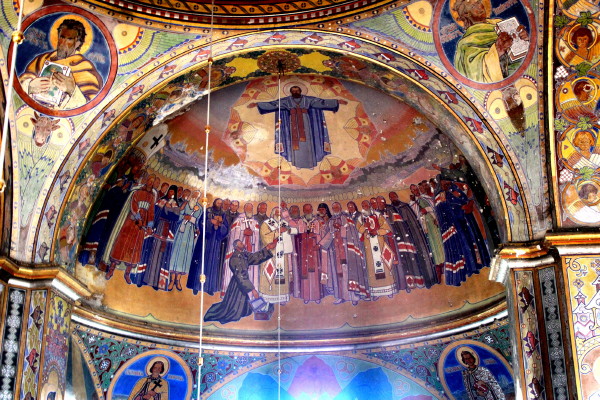Greek Catholic church
Greek Catholic church (Греко-католицька церква; Hreko-katolytska tserkva).The historical name given to churches in the eastern half of the Roman Empire or in lands culturally dependent on the Byzantine Empire that gave allegiance to Rome but at the same time maintained many of their traditional Eastern religious customs. Some of these emerged in the early centuries of the Christian era, although most arose after the split between Eastern Orthodoxy and Western Catholicism in 1054.
Ideally, the Roman church was a universal cultural and religious entity without any national connotations whereas the Slavic and other churches in the East (Russian, Ukrainian-Belarusian, Bulgarian, Romanian, etc) were culturally (and usually administratively) dependent on Byzantium and were thus viewed as ‘Greek’ churches practicing the Greek rite. Ukrainian Christians in the 16th and 17th centuries called themselves ‘people of the Greek-Eastern rite.’ The Church Union of Berestia (1596), with its pragmatic though only partial solutions to the problems of church unity, attempted to overcome the divisions between East and West by creating a number of ‘Greek’ eparchies united administratively and by creed to the Roman Catholic world. The term Graeci catholici was coined by the Vatican to distinguish this new entity from the rest of the Eastern world—the Graeci schismatici or simply Graeci. However, as early as the 1620s, the term Rutheni catholici began to be used to characterize Ukrainian (and Belarusian) Catholicism, thus recognizing at least a nascent national character in these churches (Ukrainians and Belarusians not united with Rome were called Rutheni schismatici). These same terms were used to describe the rite of the Ukrainian churches. Similarly, the names Rutheni uniti and Rutheni non uniti or just simply uniti and non uniti were used especially by Polish religious as well as lay circles in order to underline the singularity of Ukrainian Catholicism and to imply its inferiority vis-á-vis their own Roman Catholicism. The Orthodox in Eastern Europe also used the name ‘Uniate’ pejoratively.
As an official appellation ‘Greek Catholic’ (Griechisch-katolisch) was introduced by the Austrian administration during the reign of Empress Maria Theresa in order to group under one name all the Eastern rite Catholics in the Austro-Hungarian Empire (ie, Ukrainians, Romanians, Serbs, Croats, Hungarians, etc). This designation outlived the empire and was retained as the official name by its successor states. The name was also adopted in countries to which adherents of these churches emigrated. In fact, however, the appellation ‘Greek’ was irrational for it incorrectly implied that the liturgical language was Greek. For this reason, the Vatican now officially calls the earlier ‘Greek’ rite ‘Byzantine,’ a designation that encompasses the Albanians, Belarusians, Bulgarians, Greeks, Italians, Syrian Melchites, Hungarians, Russians, Romanians, Slovaks, Croats, and Ukrainians regardless of their place of residence. Furthermore, the national character of these churches is also now generally recognized by Rome; thus Ukrainian Catholics are more specifically Catholics of the Ukrainian-Byzantine rite, Romanian Catholics are Catholics of the Romanian-Byzantine rite, and so on.
Among the various branches of the Byzantine rite, the Ukrainians are the most numerous (about 5.5 million in 1939), followed by the Romanians (1.7 million), Hungarians (250,000), and others. The Hungarian and Slovak Byzantine-rite Catholics are mostly assimilated Ukrainians from Transcarpathia (see Mukachevo eparchy and Prešov eparchy). Today, although it is anachronistic to ignore the national dimension of these churches by simply referring to them as Greek Catholic, this name is still given to Ukrainian Catholics living in Poland, Czech Republic, Slovakia, and former Yugoslavia where, for political reasons, the appellation ‘Ukrainian’ is avoided. Similarly, the term ‘Greek Catholic church’ is employed for Eastern-rite Catholics in Hungary. In the 1960s, the name Ukrainian Catholic church was adopted to designate Ukrainian Catholics in the diaspora as well as the underground Ukrainian Catholic communities in the USSR.
Atanasii Velyky
[This article originally appeared in the Encyclopedia of Ukraine, vol. 2 (1988).]

